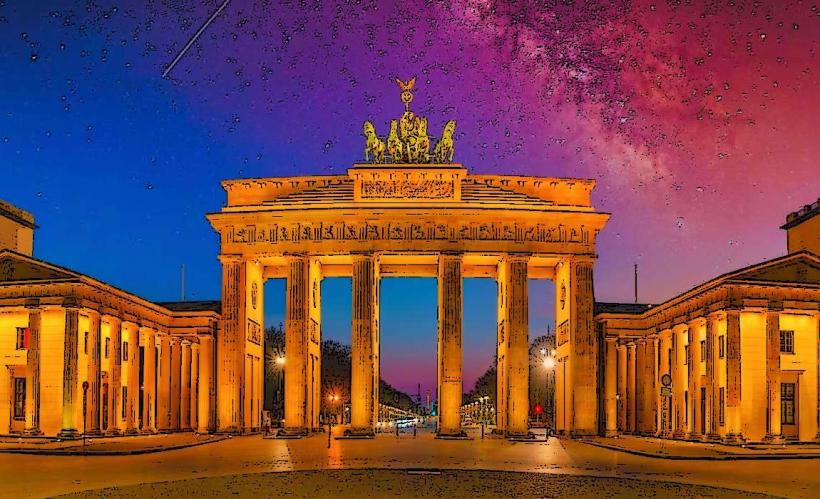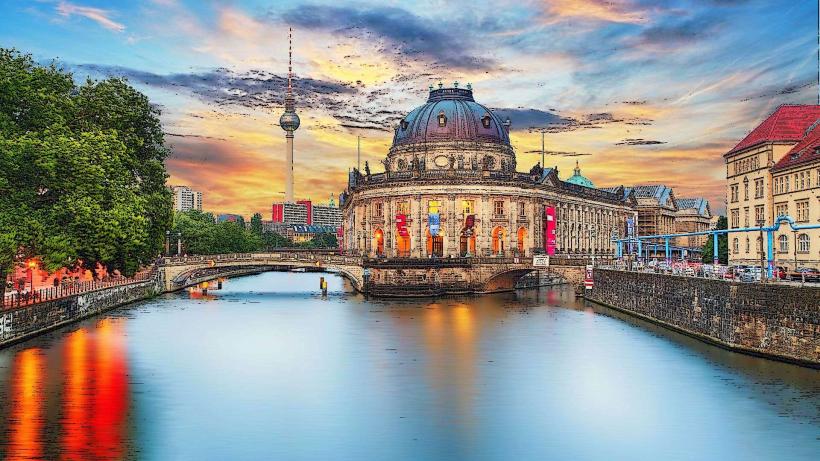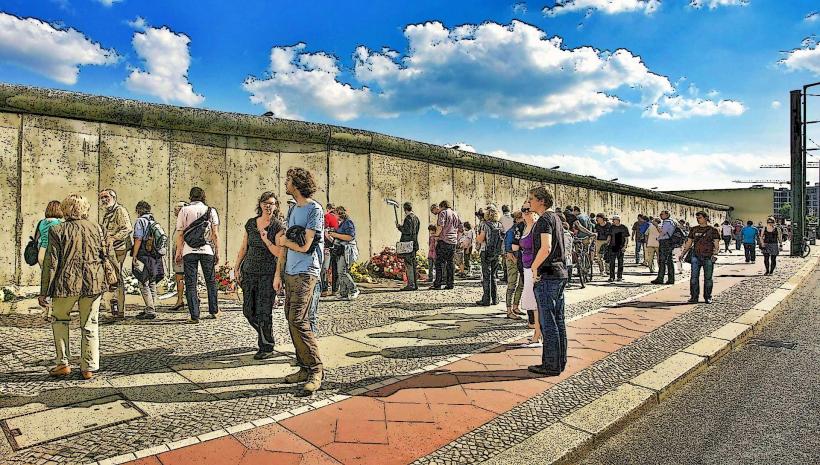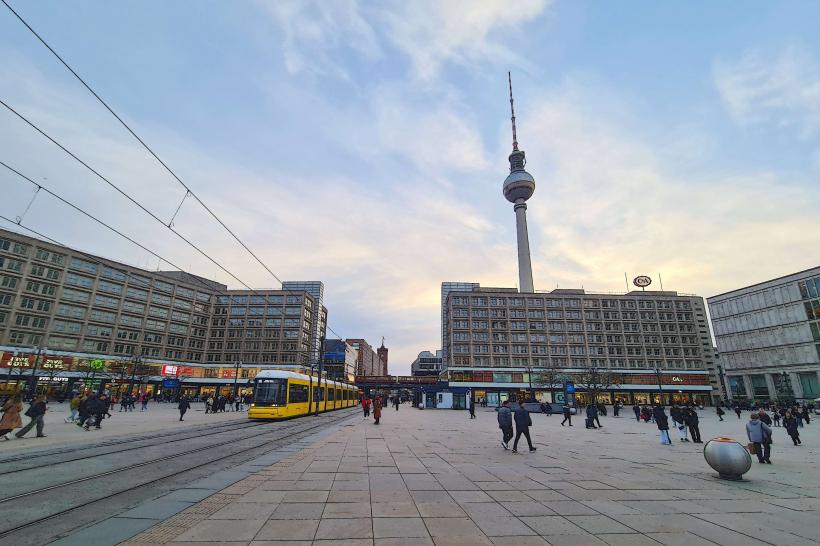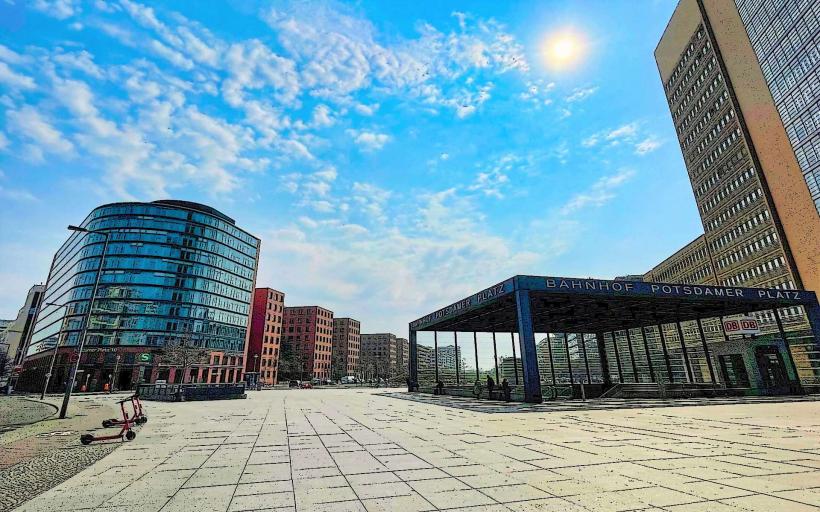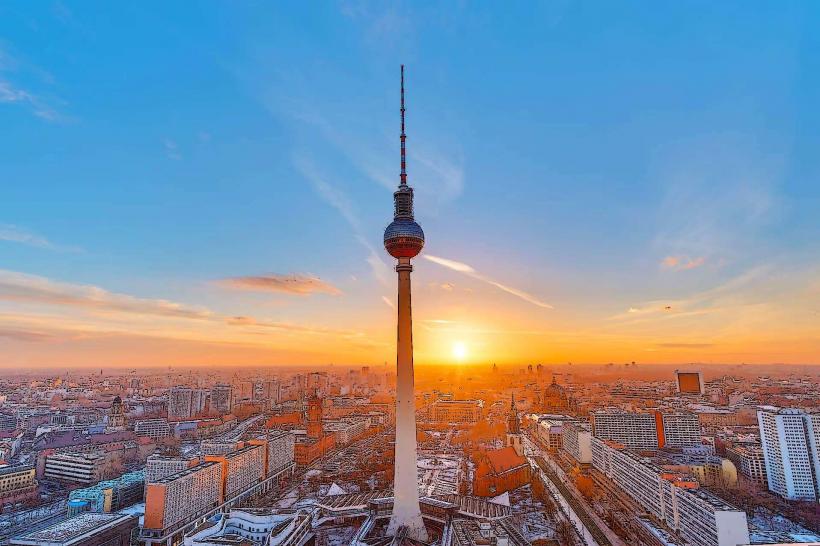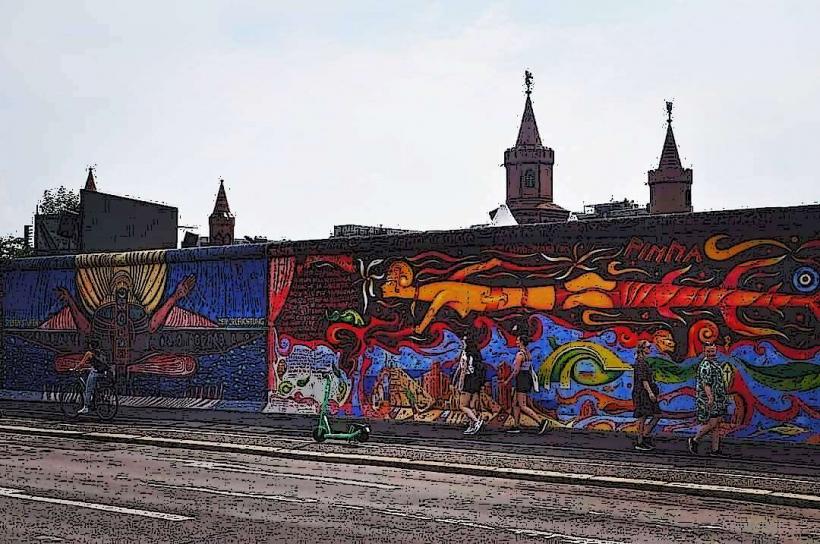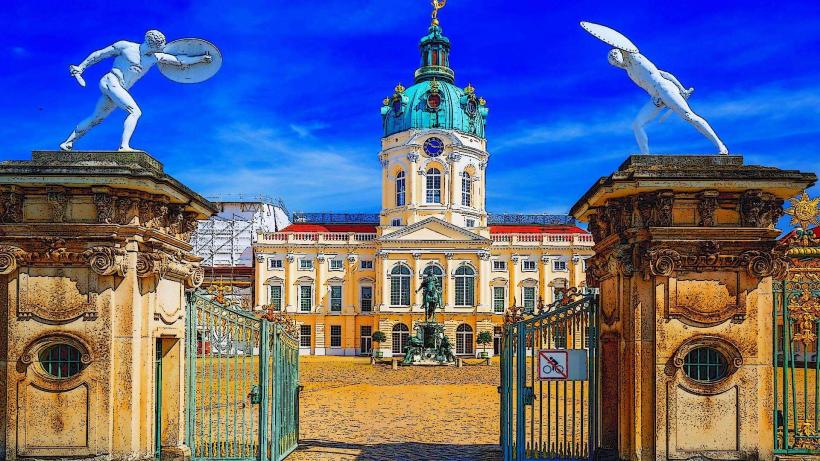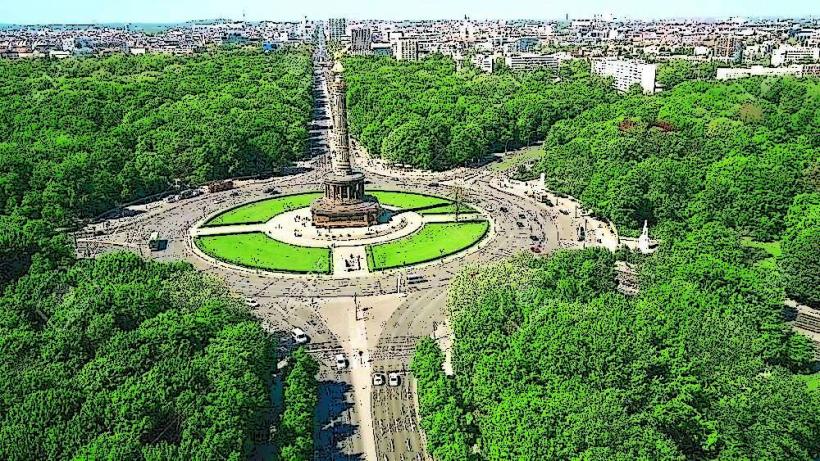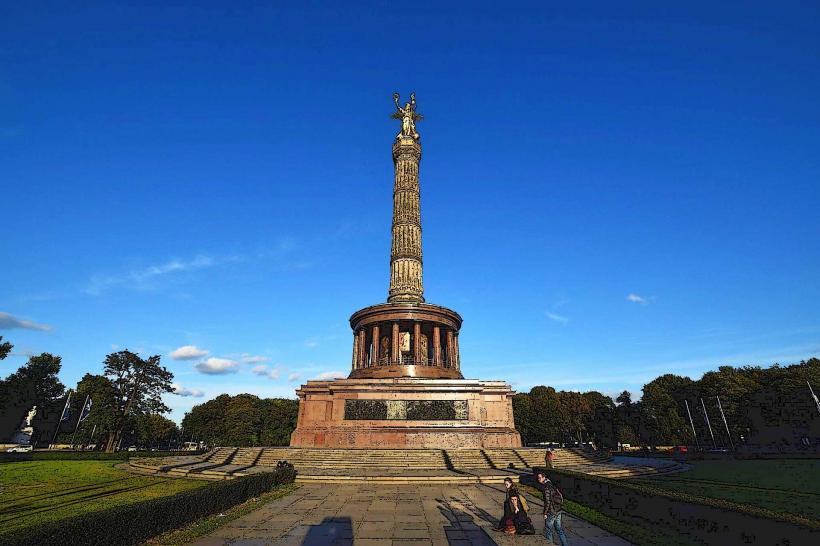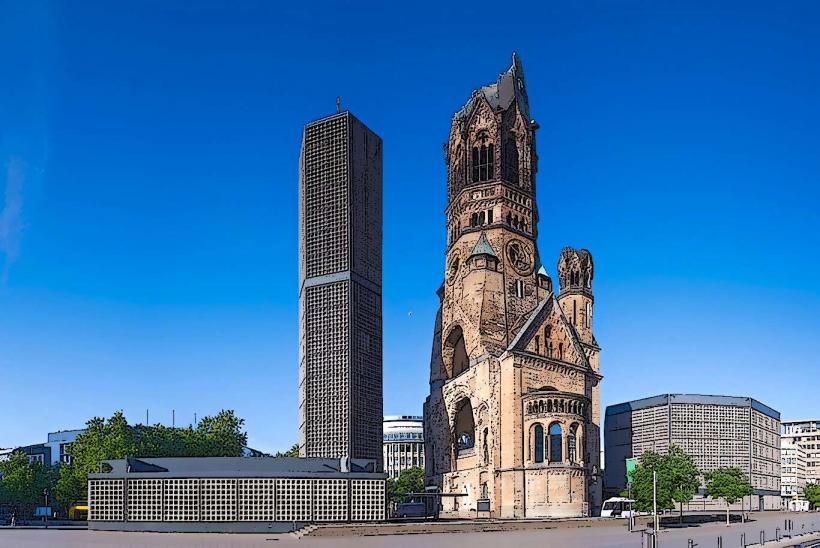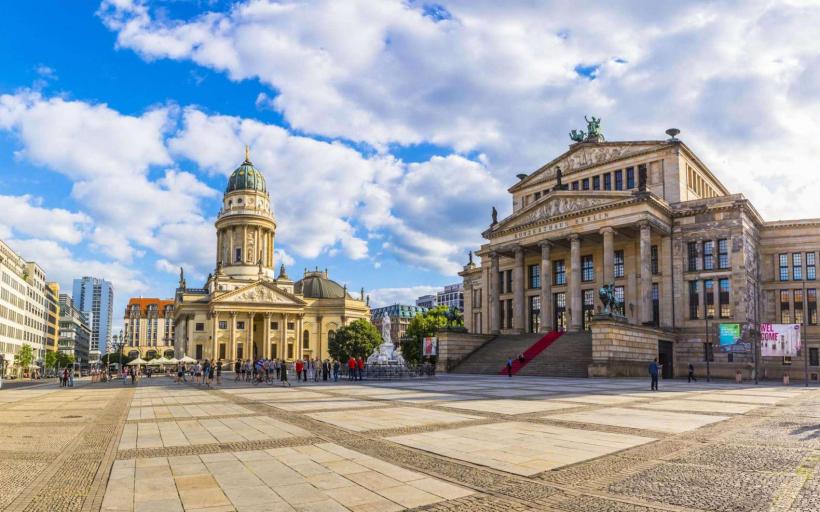Information
Landmark: Reichstag BuildingCity: Berlin
Country: Germany
Continent: Europe
The Reichstag Building is one of Berlin's most significant and iconic landmarks, both in terms of its architecture and its pivotal role in German history. It has served as the seat of the German Parliament since the 19th century and has witnessed key moments in German political history, including the fall of the Weimar Republic, the rise of National Socialism, the Cold War, and the reunification of Germany. Today, it symbolizes Germany's democratic values and the country's post-World War II progress.
1. Historical Background
- Construction and Early History: The Reichstag Building was designed by architect Paul Wallot and was completed in 1894. It was intended to house the Imperial Diet (Reichstag) of the newly unified German Empire, which had been formed in 1871. The building's construction was a statement of the growing power and unity of Germany at the time.
- Architectural Design: The Reichstag’s architecture blends elements of Renaissance and Baroque styles, featuring a grand façade, a central dome, and extensive use of stone. Its design was intended to reflect the dignity of the new German Empire and the importance of the legislative body it housed.
- Fire of 1933: The Reichstag is perhaps most infamous for the Reichstag Fire that occurred on February 27, 1933. This devastating event was pivotal in the rise of Adolf Hitler and the Nazi regime. The fire was blamed on a Dutch communist, Marinus van der Lubbe, though the Nazis used the event as a pretext to pass the Reichstag Fire Decree, which suspended civil liberties and allowed Hitler to consolidate his power. The fire severely damaged the building, and for a time, it was left in ruins.
- Symbol of Division: After World War II, the Reichstag became a symbol of Germany’s division during the Cold War. It stood in West Berlin, just a short distance from the Berlin Wall and the border between East and West. The building was no longer the seat of the German government, which had relocated to Bonn.
- Reunification and Restoration: Following the fall of the Berlin Wall in 1989 and Germany's reunification in 1990, the Reichstag became the seat of the German Bundestag (Parliament) once again. In the 1990s, the building underwent extensive renovations, including the addition of a striking glass dome designed by architect Norman Foster.
2. Architecture and Design
- Neoclassical Style: The Reichstag is an example of neoclassical architecture, featuring a large, symmetrical façade with a central dome. The building has a classical colonnade with several columns, and its exterior is decorated with various statues, including figures representing the German people and history.
- The Glass Dome: One of the most modern features of the Reichstag today is the glass dome designed by Norman Foster during the 1990s renovation. The dome serves as a symbol of transparency in government. Visitors can enter the dome and walk up a spiral ramp to the top, where they can enjoy panoramic views of Berlin. The dome also allows natural light to filter into the legislative chamber below.
- Interior Features: The building’s interior includes the plenary chamber, where the Bundestag meets, and various rooms for parliamentary debates, committee meetings, and offices. The interior has been modernized to meet the needs of a modern democratic government, but many original features have been preserved to maintain the building’s historic character.
3. Symbolism and Role in German Politics
- Seat of the Bundestag: Today, the Reichstag serves as the seat of the Bundestag, the lower house of the German federal parliament. The building is central to Germany’s democracy and represents the country’s commitment to freedom, unity, and transparency. The German Chancellor addresses the Bundestag here, and major political decisions are made within its walls.
- The Glass Dome and Transparency: The Reichstag’s glass dome symbolizes the idea of political transparency. The dome allows visitors to view the parliamentary chamber below, symbolizing that the workings of the government are open to the public. It is a powerful metaphor for modern democracy, where the government is accessible and accountable to the people.
- Political and Ceremonial Events: The Reichstag is also used for ceremonial functions and state events. Major political speeches and addresses to the nation are often given at the Reichstag, and it is where the German President formally opens the parliamentary session each year.
- Unification Symbol: The Reichstag’s role in Germany's reunification was pivotal. When Germany was reunified in 1990, the building symbolized the country’s renewed sense of unity and commitment to democracy. The restoration and return of the Reichstag to its role as the seat of the German parliament marked the country’s transition from a divided state to a unified, democratic republic.
4. Visiting the Reichstag
- The Dome and Panoramic Views: One of the most popular aspects of visiting the Reichstag is the glass dome, which offers incredible views of Berlin’s historic skyline. Visitors can climb to the top of the dome and enjoy a 360-degree view of landmarks such as the Brandenburg Gate, Berlin Cathedral, and the Berlin Wall Memorial.
- Access and Tours: Admission to the Reichstag building is free, but visitors must pre-register to gain access. There are audio guides available in multiple languages, and guided tours are offered to provide deeper insights into the building’s history, architecture, and role in Germany’s politics. The Reichstag is also home to several exhibitions that explore its history, including the Reichstag Fire and the building’s restoration after German reunification.
- Plenary Chamber: Visitors can also get a glimpse of the plenary chamber, where parliamentarians meet to discuss and vote on legislation. The chamber is modern and equipped with the latest technology, reflecting Germany's commitment to innovation and democratic principles.
- The Parliamentary Gardens: Surrounding the Reichstag is the Parliamentary Gardens, an area that includes landscaped green spaces and paths for visitors to stroll. The gardens also provide an excellent view of the Reichstag's impressive façade.
5. Nearby Attractions
- Brandenburg Gate: Just a short walk from the Reichstag, the Brandenburg Gate is another iconic symbol of Berlin and Germany’s reunification. It is a must-see landmark in the city, known for its neoclassical architecture and historical significance.
- Tiergarten Park: To the west of the Reichstag, the Tiergarten is Berlin’s largest and most famous park. It’s an ideal place for a relaxing walk or a picnic, with several monuments and memorials scattered throughout the park.
- Holocaust Memorial: Nearby is the Memorial to the Murdered Jews of Europe (Holocaust Memorial), which is a poignant and moving tribute to the millions of Jews who were victims of the Holocaust.
- Berlin Wall Memorial and East Side Gallery: Not far from the Reichstag, the Berlin Wall Memorial and the East Side Gallery provide insights into Berlin’s Cold War history and the division between East and West Berlin.
6. Conclusion
The Reichstag Building is not just a stunning architectural landmark but a living symbol of Germany’s political evolution. From its creation as the seat of the Imperial Parliament to its role in the rise of National Socialism, the Cold War, and reunification, the Reichstag is central to understanding Germany’s past and its commitment to democracy today. The building’s glass dome and modern design juxtapose its historical significance, making it a powerful emblem of the country’s transparency, unity, and democratic values. Whether you visit for the architecture, history, or political importance, the Reichstag offers a deep insight into Germany’s complex and ever-evolving identity.

